Tales of Terror and Mystery by Sir Arthur Conan Doyle (popular romance novels txt) 📕
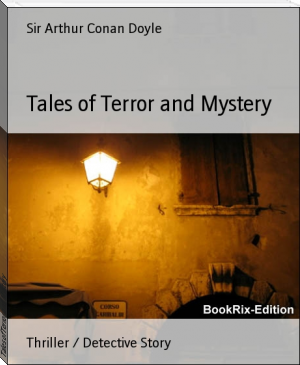
- Author: Sir Arthur Conan Doyle
Book online «Tales of Terror and Mystery by Sir Arthur Conan Doyle (popular romance novels txt) 📕». Author Sir Arthur Conan Doyle
a half-smoked cigar, there was no trace whatever of its recent occupant. The door of this carriage was fastened. In the next compartment, to which attention had been originally drawn, there was no sign either of the gentleman with the astrakhan collar or of the young lady who accompanied him. All three passengers had disappeared. On the other hand, there was found upon the floor of this carriage--the one in which the tall traveller and the lady had been--a young man fashionably dressed and of elegant appearance. He lay with his knees drawn up, and his head resting against the farther door, an elbow upon either seat. A bullet had penetrated his heart and his death must have been instantaneous. No one had seen such a man enter the train, and no railway ticket was found in his pocket, neither were there any markings upon his linen, nor papers nor personal property which might help to identify him. Who he was, whence he had come, and how he had met his end were each as great a mystery as what had occurred to the three people who had started an hour and a half before from Willesden in those two compartments.
I have said that there was no personal property which might help to identify him, but it is true that there was one peculiarity about this unknown young man which was much commented upon at the time. In his pockets were found no fewer than six valuable gold watches, three in the various pockets of his waist-coat, one in his ticket-pocket, one in his breast-pocket, and one small one set in a leather strap and fastened round his left wrist. The obvious explanation that the man was a pickpocket, and that this was his plunder, was discounted by the fact that all six were of American make and of a type which is rare in England. Three of them bore the mark of the Rochester Watchmaking Company; one was by Mason, of Elmira; one was unmarked; and the small one, which was highly jewelled and ornamented, was from Tiffany, of New York. The other contents of his pocket consisted of an ivory knife with a corkscrew by Rodgers, of Sheffield; a small, circular mirror, one inch in diameter; a readmission slip to the Lyceum Theatre; a silver box full of vesta matches, and a brown leather cigar-case containing two cheroots--also two pounds fourteen shillings in money. It was clear, then, that whatever motives may have led to his death, robbery was not among them. As already mentioned, there were no markings upon the man's linen, which appeared to be new, and no tailor's name upon his coat. In appearance he was young, short, smooth-cheeked, and delicately featured. One of his front teeth was conspicuously stopped with gold.
On the discovery of the tragedy an examination was instantly made of the tickets of all passengers, and the number of the passengers themselves was counted. It was found that only three tickets were unaccounted for, corresponding to the three travellers who were missing. The express was then allowed to proceed, but a new guard was sent with it, and John Palmer was detained as a witness at Rugby. The carriage which included the two compartments in question was uncoupled and side-tracked. Then, on the arrival of Inspector Vane, of Scotland Yard, and of Mr. Henderson, a detective in the service of the railway company, an exhaustive inquiry was made into all the circumstances.
That crime had been committed was certain. The bullet, which appeared to have come from a small pistol or revolver, had been fired from some little distance, as there was no scorching of the clothes. No weapon was found in the compartment (which finally disposed of the theory of suicide), nor was there any sign of the brown leather bag which the guard had seen in the hand of the tall gentleman. A lady's parasol was found upon the rack, but no other trace was to be seen of the travellers in either of the sections. Apart from the crime, the question of how or why three passengers (one of them a lady) could get out of the train, and one other get in during the unbroken run between Willesden and Rugby, was one which excited the utmost curiosity among the general public, and gave rise to much speculation in the London Press.
John Palmer, the guard was able at the inquest to give some evidence which threw a little light upon the matter. There was a spot between Tring and Cheddington, according to his statement, where, on account of some repairs to the line, the train had for a few minutes slowed down to a pace not exceeding eight or ten miles an hour. At that place it might be possible for a man, or even for an exceptionally active woman, to have left the train without serious injury. It was true that a gang of platelayers was there, and that they had seen nothing, but it was their custom to stand in the middle between the metals, and the open carriage door was upon the far side, so that it was conceivable that someone might have alighted unseen, as the darkness would by that time be drawing in. A steep embankment would instantly screen anyone who sprang out from the observation of the navvies.
The guard also deposed that there was a good deal of movement upon the platform at Willesden Junction, and that though it was certain that no one had either joined or left the train there, it was still quite possible that some of the passengers might have changed unseen from one compartment to another. It was by no means uncommon for a gentleman to finish his cigar in a smoking carriage and then to change to a clearer atmosphere. Supposing that the man with the black beard had done so at Willesden (and the half-smoked cigar upon the floor seemed to favour the supposition), he would naturally go into the nearest section, which would bring him into the company of the two other actors in this drama. Thus the first stage of the affair might be surmised without any great breach of probability. But what the second stage had been, or how the final one had been arrived at, neither the guard nor the experienced detective officers could suggest.
A careful examination of the line between Willesden and Rugby resulted in one discovery which might or might not have a bearing upon the tragedy. Near Tring, at the very place where the train slowed down, there was found at the bottom of the embankment a small pocket Testament, very shabby and worn. It was printed by the Bible Society of London, and bore an inscription: "From John to Alice. Jan. 13th, 1856," upon the fly-leaf. Underneath was written: "James. July 4th, 1859," and beneath that again: "Edward. Nov. 1st, 1869," all the entries being in the same handwriting. This was the only clue, if it could be called a clue, which the police obtained, and the coroner's verdict of "Murder by a person or persons unknown" was the unsatisfactory ending of a singular case. Advertisement, rewards, and inquiries proved equally fruitless, and nothing could be found which was solid enough to form the basis for a profitable investigation.
It would be a mistake, however, to suppose that no theories were formed to account for the facts. On the contrary, the Press, both in England and in America, teemed with suggestions and suppositions, most of which were obviously absurd. The fact that the watches were of American make, and some peculiarities in connection with the gold stopping of his front tooth, appeared to indicate that the deceased was a citizen of the United States, though his linen, clothes and boots were undoubtedly of British manufacture. It was surmised, by some, that he was concealed under the seat, and that, being discovered, he was for some reason, possibly because he had overheard their guilty secrets, put to death by his fellow-passengers. When coupled with generalities as to the ferocity and cunning of anarchical and other secret societies, this theory sounded as plausible as any.
The fact that he should be without a ticket would be consistent with the idea of concealment, and it was well known that women played a prominent part in the Nihilistic propaganda. On the other hand, it was clear, from the guard's statement, that the man must have been hidden there BEFORE the others arrived, and how unlikely the coincidence that conspirators should stray exactly into the very compartment in which a spy was already concealed! Besides, this explanation ignored the man in the smoking carriage, and gave no reason at all for his simultaneous disappearance. The police had little difficulty in showing that such a theory would not cover the facts, but they were unprepared in the absence of evidence to advance any alternative explanation.
There was a letter in the Daily Gazette, over the signature of a well-known criminal investigator, which gave rise to considerable discussion at the time. He had formed a hypothesis which had at least ingenuity to recommend it, and I cannot do better than append it in his own words.
"Whatever may be the truth," said he, "it must depend upon some bizarre and rare combination of events, so we need have no hesitation in postulating such events in our explanation. In the absence of data we must abandon the analytic or scientific method of investigation, and must approach it in the synthetic fashion. In a word, instead of taking known events and deducing from them what has occurred, we must build up a fanciful explanation if it will only be consistent with known events. We can then test this explanation by any fresh facts which may arise. If they all fit into their places, the probability is that we are upon the right track, and with each fresh fact this probability increases in a geometrical progression until the evidence becomes final and convincing.
"Now, there is one most remarkable and suggestive fact which has not met with the attention which it deserves. There is a local train running through Harrow and King's Langley, which is timed in such a way that the express must have overtaken it at or about the period when it eased down its speed to eight miles an hour on account of the repairs of the line. The two trains would at that time be travelling in the same direction at a similar rate of speed and upon parallel lines. It is within every one's experience how, under such circumstances, the occupant of each carriage can see very plainly the passengers in the other carriages opposite to him. The lamps of the express had been lit at Willesden, so that each compartment was brightly illuminated, and most visible to an observer from outside.
"Now, the sequence of events as I reconstruct them would be after this fashion. This young man with the abnormal number of watches was alone in the carriage of the slow train. His ticket, with his papers and gloves and other things, was, we will suppose, on the seat beside him. He was probably an American, and also probably a man of weak intellect. The excessive wearing of jewellery is an early symptom in some forms of mania.
"As he sat watching the carriages of the express which were (on account of the state of the line) going at the same pace as himself, he suddenly saw some people in it whom
I have said that there was no personal property which might help to identify him, but it is true that there was one peculiarity about this unknown young man which was much commented upon at the time. In his pockets were found no fewer than six valuable gold watches, three in the various pockets of his waist-coat, one in his ticket-pocket, one in his breast-pocket, and one small one set in a leather strap and fastened round his left wrist. The obvious explanation that the man was a pickpocket, and that this was his plunder, was discounted by the fact that all six were of American make and of a type which is rare in England. Three of them bore the mark of the Rochester Watchmaking Company; one was by Mason, of Elmira; one was unmarked; and the small one, which was highly jewelled and ornamented, was from Tiffany, of New York. The other contents of his pocket consisted of an ivory knife with a corkscrew by Rodgers, of Sheffield; a small, circular mirror, one inch in diameter; a readmission slip to the Lyceum Theatre; a silver box full of vesta matches, and a brown leather cigar-case containing two cheroots--also two pounds fourteen shillings in money. It was clear, then, that whatever motives may have led to his death, robbery was not among them. As already mentioned, there were no markings upon the man's linen, which appeared to be new, and no tailor's name upon his coat. In appearance he was young, short, smooth-cheeked, and delicately featured. One of his front teeth was conspicuously stopped with gold.
On the discovery of the tragedy an examination was instantly made of the tickets of all passengers, and the number of the passengers themselves was counted. It was found that only three tickets were unaccounted for, corresponding to the three travellers who were missing. The express was then allowed to proceed, but a new guard was sent with it, and John Palmer was detained as a witness at Rugby. The carriage which included the two compartments in question was uncoupled and side-tracked. Then, on the arrival of Inspector Vane, of Scotland Yard, and of Mr. Henderson, a detective in the service of the railway company, an exhaustive inquiry was made into all the circumstances.
That crime had been committed was certain. The bullet, which appeared to have come from a small pistol or revolver, had been fired from some little distance, as there was no scorching of the clothes. No weapon was found in the compartment (which finally disposed of the theory of suicide), nor was there any sign of the brown leather bag which the guard had seen in the hand of the tall gentleman. A lady's parasol was found upon the rack, but no other trace was to be seen of the travellers in either of the sections. Apart from the crime, the question of how or why three passengers (one of them a lady) could get out of the train, and one other get in during the unbroken run between Willesden and Rugby, was one which excited the utmost curiosity among the general public, and gave rise to much speculation in the London Press.
John Palmer, the guard was able at the inquest to give some evidence which threw a little light upon the matter. There was a spot between Tring and Cheddington, according to his statement, where, on account of some repairs to the line, the train had for a few minutes slowed down to a pace not exceeding eight or ten miles an hour. At that place it might be possible for a man, or even for an exceptionally active woman, to have left the train without serious injury. It was true that a gang of platelayers was there, and that they had seen nothing, but it was their custom to stand in the middle between the metals, and the open carriage door was upon the far side, so that it was conceivable that someone might have alighted unseen, as the darkness would by that time be drawing in. A steep embankment would instantly screen anyone who sprang out from the observation of the navvies.
The guard also deposed that there was a good deal of movement upon the platform at Willesden Junction, and that though it was certain that no one had either joined or left the train there, it was still quite possible that some of the passengers might have changed unseen from one compartment to another. It was by no means uncommon for a gentleman to finish his cigar in a smoking carriage and then to change to a clearer atmosphere. Supposing that the man with the black beard had done so at Willesden (and the half-smoked cigar upon the floor seemed to favour the supposition), he would naturally go into the nearest section, which would bring him into the company of the two other actors in this drama. Thus the first stage of the affair might be surmised without any great breach of probability. But what the second stage had been, or how the final one had been arrived at, neither the guard nor the experienced detective officers could suggest.
A careful examination of the line between Willesden and Rugby resulted in one discovery which might or might not have a bearing upon the tragedy. Near Tring, at the very place where the train slowed down, there was found at the bottom of the embankment a small pocket Testament, very shabby and worn. It was printed by the Bible Society of London, and bore an inscription: "From John to Alice. Jan. 13th, 1856," upon the fly-leaf. Underneath was written: "James. July 4th, 1859," and beneath that again: "Edward. Nov. 1st, 1869," all the entries being in the same handwriting. This was the only clue, if it could be called a clue, which the police obtained, and the coroner's verdict of "Murder by a person or persons unknown" was the unsatisfactory ending of a singular case. Advertisement, rewards, and inquiries proved equally fruitless, and nothing could be found which was solid enough to form the basis for a profitable investigation.
It would be a mistake, however, to suppose that no theories were formed to account for the facts. On the contrary, the Press, both in England and in America, teemed with suggestions and suppositions, most of which were obviously absurd. The fact that the watches were of American make, and some peculiarities in connection with the gold stopping of his front tooth, appeared to indicate that the deceased was a citizen of the United States, though his linen, clothes and boots were undoubtedly of British manufacture. It was surmised, by some, that he was concealed under the seat, and that, being discovered, he was for some reason, possibly because he had overheard their guilty secrets, put to death by his fellow-passengers. When coupled with generalities as to the ferocity and cunning of anarchical and other secret societies, this theory sounded as plausible as any.
The fact that he should be without a ticket would be consistent with the idea of concealment, and it was well known that women played a prominent part in the Nihilistic propaganda. On the other hand, it was clear, from the guard's statement, that the man must have been hidden there BEFORE the others arrived, and how unlikely the coincidence that conspirators should stray exactly into the very compartment in which a spy was already concealed! Besides, this explanation ignored the man in the smoking carriage, and gave no reason at all for his simultaneous disappearance. The police had little difficulty in showing that such a theory would not cover the facts, but they were unprepared in the absence of evidence to advance any alternative explanation.
There was a letter in the Daily Gazette, over the signature of a well-known criminal investigator, which gave rise to considerable discussion at the time. He had formed a hypothesis which had at least ingenuity to recommend it, and I cannot do better than append it in his own words.
"Whatever may be the truth," said he, "it must depend upon some bizarre and rare combination of events, so we need have no hesitation in postulating such events in our explanation. In the absence of data we must abandon the analytic or scientific method of investigation, and must approach it in the synthetic fashion. In a word, instead of taking known events and deducing from them what has occurred, we must build up a fanciful explanation if it will only be consistent with known events. We can then test this explanation by any fresh facts which may arise. If they all fit into their places, the probability is that we are upon the right track, and with each fresh fact this probability increases in a geometrical progression until the evidence becomes final and convincing.
"Now, there is one most remarkable and suggestive fact which has not met with the attention which it deserves. There is a local train running through Harrow and King's Langley, which is timed in such a way that the express must have overtaken it at or about the period when it eased down its speed to eight miles an hour on account of the repairs of the line. The two trains would at that time be travelling in the same direction at a similar rate of speed and upon parallel lines. It is within every one's experience how, under such circumstances, the occupant of each carriage can see very plainly the passengers in the other carriages opposite to him. The lamps of the express had been lit at Willesden, so that each compartment was brightly illuminated, and most visible to an observer from outside.
"Now, the sequence of events as I reconstruct them would be after this fashion. This young man with the abnormal number of watches was alone in the carriage of the slow train. His ticket, with his papers and gloves and other things, was, we will suppose, on the seat beside him. He was probably an American, and also probably a man of weak intellect. The excessive wearing of jewellery is an early symptom in some forms of mania.
"As he sat watching the carriages of the express which were (on account of the state of the line) going at the same pace as himself, he suddenly saw some people in it whom
Free e-book «Tales of Terror and Mystery by Sir Arthur Conan Doyle (popular romance novels txt) 📕» - read online now
Similar e-books:
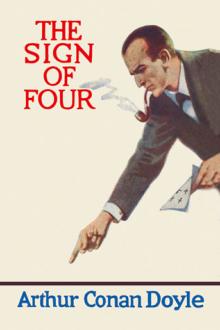
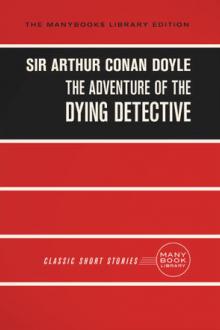
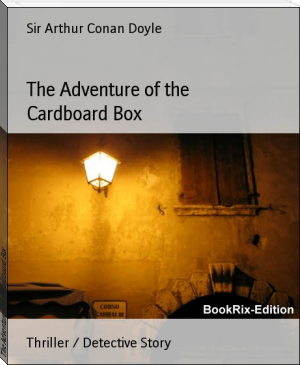
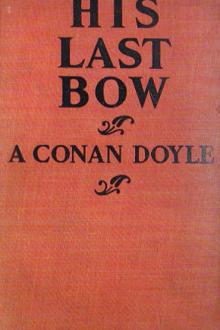

Comments (0)